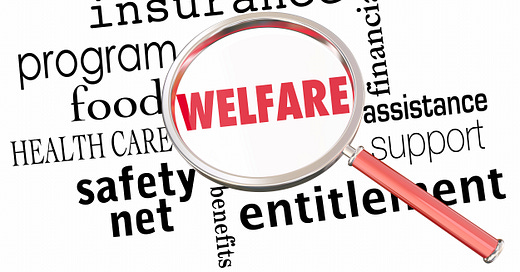Facts about whether Welfare Discourages Work
Social welfare programs in America have long been coupled with requirements intended to encourage recipients to find employment and return to work. This arose from a bipartisan fear among policymakers that providing government support would engender idleness and laziness in the public. But what does the data say about the impact of restricting social safety nets? Do welfare programs discourage work?
Restrictions on eligibility for welfare programs broadly take two forms: work requirements and income requirements. There are some important distinctions between the two:
Work requirements basically mean a person needs to have employment to qualify for certain programs. To satisfy a work requirement, a participant must verify—usually monthly—that they are working, or they will be disqualified from the program. Work requirements are used for programs including Temporary Aid for Needy Families (TANF), the Supplemental Nutrition Assistance Program (SNAP, or food stamps), and Medicaid.
Income requirements are theoretically a less straightforward barrier to participation, but instead affect the level of benefits people are eligible for. Participants must earn a certain amount before benefits become available, creating what are called “phase-ins” for receiving levels of benefits at different levels of income. In practice, however, these requirements are basically conditional on having a job—if someone has no source of income, then income requirements effectively disqualify participation.
The fear that Americans would stop working if they received support from the government has characterized these programs and these requirements since the 1970s. However, available research and evidence provides little support for the idea.
When the Biden administration passed the 2021 American Rescue Plan, a major provision was to remove phase-ins for the Child Tax Credit (CTC) and increase payments. The result was a reduction of nearly 50% in America’s child poverty rate over that year, while research into the effect of the “fully funded” CTC found “no significant effect” on employment for eligible parents—in other words, the credit didn’t seem to cause any parents to leave the labor force. When the phase-in was restored to the CTC in 2022, nearly 3.7 million kids fell back into poverty that January, and the year overall saw the sharpest uptick in the child poverty rate on record.
Economists have studied the potential impact of welfare programs on the workforce beyond America, as well. A study from MIT and Harvard evaluated data from cash programs in four countries in Latin America, two in Southeast Asia, and one in Morocco, which provided cash assistance in exchange for recipients meeting conditions like having kids attend school. None of the evaluated programs were found to have a statistically significant effect on levels of employment or number of hours worked: in some trials, work rates increased, and in others, it decreased.
Other studies in developing nations found that cash assistance programs giving funds to learn skilled trades led to significant increases in hours worked and earning levels. In Uganda, researchers found that giving money to unemployed youths increased hours worked by 17% and earnings by 38%. A study of a program in Nigeria giving cash and basic business training to women found it led to a 61% increase in work hours. These kinds of results have been found domestically in America too. Studies of “negative income tax” programs—giving less support as income grows—found “very mild” to negligible impacts on employment rates for recipients.
Not only does there seem to be scant evidence that welfare programs engender laziness, but the evidence for the efficacy of work requirements in actually encouraging employment has been mixed. According to the Congressional Budget Office:
Work requirements for TANF created substantial increases in employment the year after people enrolled that diminished later on; requirements for SNAP had a lesser effect on employment; and requirements for Medicaid had little effect.
Some people had increased incomes from working to meet program requirements, while others who couldn’t meet requirements were left with little income from a lack of access to benefits—earnings increases from TANF’s requirements roughly equaled benefits reductions (effectively cancelling each other out), while SNAP and Medicaid requirements reduced benefits more than they increased incomes.
Research into the 1996 welfare law that introduced work requirements for cash assistance recipients casts further doubt. The findings included that growth in employment for recipients was modest and temporary, finding stable employment was an exception rather than a norm, and in a long-term perspective, the most successful programs supported efforts to grow the education and skills of people subject to work requirements, instead of those that just simply required them to work.
A growing body of evidence suggests that fears over the idea of “welfare queens,” people who take support from the government and forego their own advancement, are ill-founded and overblown. Social assistance does not lead to a decrease in employment or productivity among its recipients, and in fact may foster a greater ability for those in need to pursue and secure gainful employment. Requirements designed to force employment in exchange for aid, meanwhile, seem to have little or no meaningful effect on boosting employment while barring people who need aid from qualifying.
Thank you for reading this Fakchex article. Please share this article and join us in the fight to combat disinformation.
Fakchex is the only grassroots communication program that helps people personally combat disinformation. Fakchex presents short, fact-based articles and videos on topics about which there is considerable disinformation, designed for sharing with people who care about these topics, but may not be aware of the facts OR may not have time to research them on their own. Together, we can combat the powerful forces of disinformation that prevent us from coming together to realistically address our problems and opportunities.
This is a FREE program, open to all.
Articles and memes are posted online at: www.Magenta-Nation.com/fakchex
See videos here: www.youtube.com/@magentanation



